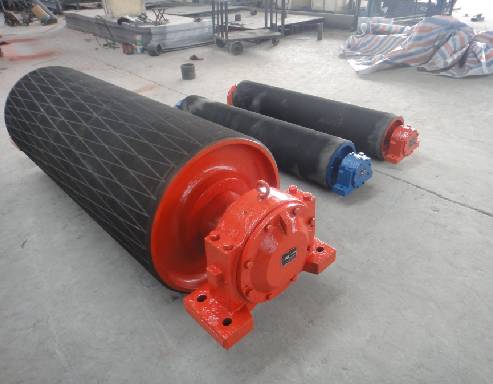 Afrikaans
Afrikaans  Albanian
Albanian  Amharic
Amharic  Arabic
Arabic  Armenian
Armenian  Azerbaijani
Azerbaijani  Basque
Basque  Belarusian
Belarusian  Bengali
Bengali  Bosnian
Bosnian  Bulgarian
Bulgarian  Catalan
Catalan  Cebuano
Cebuano  Corsican
Corsican  Croatian
Croatian  Czech
Czech  Danish
Danish  Dutch
Dutch  English
English  Esperanto
Esperanto  Estonian
Estonian  Finnish
Finnish  French
French  Frisian
Frisian  Galician
Galician  Georgian
Georgian  German
German  Greek
Greek  Gujarati
Gujarati  Haitian Creole
Haitian Creole  hausa
hausa  hawaiian
hawaiian  Hebrew
Hebrew  Hindi
Hindi  Miao
Miao  Hungarian
Hungarian  Icelandic
Icelandic  igbo
igbo  Indonesian
Indonesian  irish
irish  Italian
Italian  Japanese
Japanese  Javanese
Javanese  Kannada
Kannada  kazakh
kazakh  Khmer
Khmer  Rwandese
Rwandese  Korean
Korean  Kurdish
Kurdish  Kyrgyz
Kyrgyz  Lao
Lao  Latin
Latin  Latvian
Latvian  Lithuanian
Lithuanian  Luxembourgish
Luxembourgish  Macedonian
Macedonian  Malgashi
Malgashi  Malay
Malay  Malayalam
Malayalam  Maltese
Maltese  Maori
Maori  Marathi
Marathi  Mongolian
Mongolian  Myanmar
Myanmar  Nepali
Nepali  Norwegian
Norwegian  Norwegian
Norwegian  Occitan
Occitan  Pashto
Pashto  Persian
Persian  Polish
Polish  Portuguese
Portuguese  Punjabi
Punjabi  Romanian
Romanian  Russian
Russian  Samoan
Samoan  Scottish Gaelic
Scottish Gaelic  Serbian
Serbian  Sesotho
Sesotho  Shona
Shona  Sindhi
Sindhi  Sinhala
Sinhala  Slovak
Slovak  Slovenian
Slovenian  Somali
Somali  Spanish
Spanish  Sundanese
Sundanese  Swahili
Swahili  Swedish
Swedish  Tagalog
Tagalog  Tajik
Tajik  Tamil
Tamil  Tatar
Tatar  Telugu
Telugu  Thai
Thai  Turkish
Turkish  Turkmen
Turkmen  Ukrainian
Ukrainian  Urdu
Urdu  Uighur
Uighur  Uzbek
Uzbek  Vietnamese
Vietnamese  Welsh
Welsh  Bantu
Bantu  Yiddish
Yiddish  Yoruba
Yoruba  Zulu
Zulu roller conveyor components
Understanding Roller Conveyor Components An Essential Guide
In the world of material handling, roller conveyors are a cornerstone technology, facilitating the efficient movement of goods within various types of facilities such as warehouses, manufacturing plants, and distribution centers. Understanding the key components of roller conveyors is essential for anyone involved in logistics, manufacturing, or supply chain management. This article will delve into the various components of roller conveyors, their functions, and how they contribute to the overall efficiency of operations.
1. Rollers
The primary component of any roller conveyor system is, of course, the rollers themselves. These cylindrical structures are mounted horizontally and allow materials to move along the conveyor. Rollers can be made from a variety of materials, including steel, plastic, or rubber, depending on the specific application requirements. The diameter, length, and type of roller significantly impact the stability, speed, and load capacity of the conveyor.
2. Frame
The frame of a roller conveyor provides structural support and stability. Typically constructed from steel or aluminum, the frame ensures that the rollers are held in place and maintain proper alignment. Frame design is crucial, as it influences the conveyor's overall strength, durability, and resistance to wear and tear. An effective frame design will also take into consideration the weight and dimensions of the items being transported.
3. Drive System
A drive system enables the movement of the conveyor. This can be achieved through several methods, including belt drives, chain drives, or direct drives. Each method has its own advantages depending on the specific requirements of the operation. For instance, belt drives are commonly used for lighter loads, while chain drives are better suited for heavier, industrial applications. The choice of drive system affects not only the efficiency of material handling but also the maintenance requirements and longevity of the conveyor.
4. Supports and Hangers
roller conveyor components

Supports and hangers are critical for maintaining the proper elevation and alignment of the conveyor system. They are used to secure the conveyor in place, allowing it to operate smoothly without wobbling or sagging. In addition, supports must be adjustable to accommodate different operational needs and workspace layouts. This flexibility helps maximize the efficiency of the entire production line.
5. Belts and Chains
While roller conveyors fundamentally rely on rollers for movement, many systems incorporate belts or chains to assist in transporting products. Belt conveyors use a continuous loop of material to move goods, providing a smooth transport surface, ideal for fragile items. Chain conveyors, on the other hand, use linked chains to carry heavier items or pallets. The integration of these components enhances the versatility of roller conveyors, making them suitable for a wider range of applications.
6. End Stops and Guides
End stops and guides are essential safety features that help ensure that items do not roll off the conveyor at either end. End stops can be mechanical or electronic, and they help prevent damage to both the products and the conveyor itself. Guides are used to keep items properly aligned as they move along the conveyor, which is especially important for irregularly shaped items. Proper installation of these components contributes to the smooth operation of a roller conveyor system.
7. Sensors and Controls
Modern roller conveyors are increasingly equipped with sensors and control systems that enhance their functionality. Sensors can detect the presence of items on the conveyor, triggering automatic actions such as stopping the conveyor, diverting packages, or adjusting speed. Control systems allow operators to monitor and adjust the operation in real time, facilitating greater efficiency and minimizing downtime.
Conclusion
Roller conveyors are an invaluable asset in various industries, streamlining the movement of goods and improving operational efficiency. By understanding the essential components of roller conveyor systems, businesses can make informed decisions about their material handling strategies. Whether you are looking to design a new conveyor system or maintain an existing one, knowledge of these components is key to achieving optimal performance and reliability in your operations. The evolution of roller conveyor technology, including the integration of smart features and enhanced materials, continues to shape the future of material handling.
-
Revolutionizing Conveyor Reliability with Advanced Rubber Lagging PulleysNewsJul.22,2025
-
Powering Precision and Durability with Expert Manufacturers of Conveyor ComponentsNewsJul.22,2025
-
Optimizing Conveyor Systems with Advanced Conveyor AccessoriesNewsJul.22,2025
-
Maximize Conveyor Efficiency with Quality Conveyor Idler PulleysNewsJul.22,2025
-
Future-Proof Your Conveyor System with High-Performance Polyurethane RollerNewsJul.22,2025
-
Driving Efficiency Forward with Quality Idlers and RollersNewsJul.22,2025





























